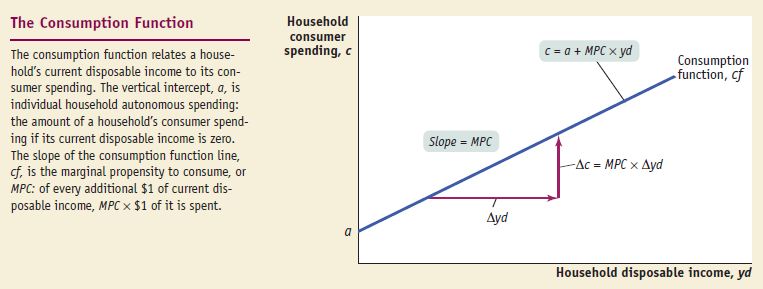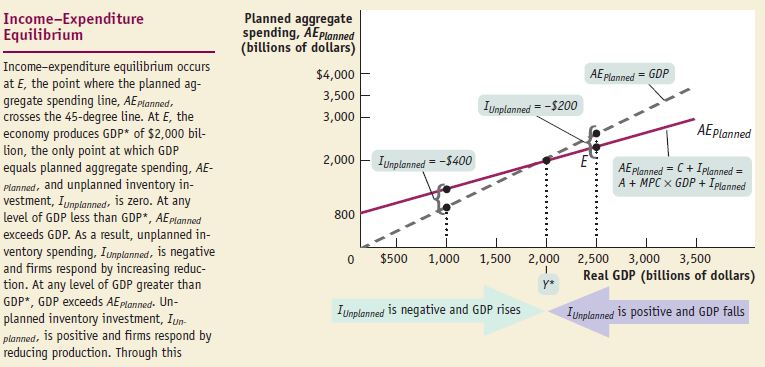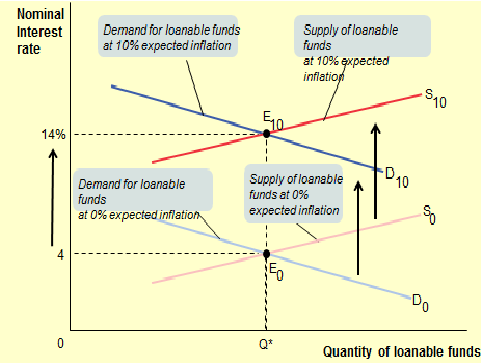
- •Fundamental Economic Principles and Economic Models. Фундаментальные принципы экономики и экономические модели.
- •Supply and Demand. Спрос и предложение.
- •Consumer and Producer Surplus. Market Reaction to Government Intervention. Излишек потребителя и производителя. Реакция рынка на вмешательство правительства.
- •Elasticity. Эластичность.
- •Theory of Consumer Behavior and Rational Choice. Теория потребительского поведения и рационального выбора.
- •Basic Economic Theory of Risk. Expected Utility Function, Risk Premium and Risk Aversion Measures. Основы экономической теории риска. Функция ожидаемой полезности. Премия риска и избегание риска.
- •Profit Maximization and Theory of Firm and Industry Supply. Максимизация прибыли и теория предложения фирмы и отрасли.
- •Production Costs in Short Run vs. Long Run. Производственные затраты в краткосрочном и долгосрочном периоде.
- •The Model of Perfect Competition. Модель совершенной конкуренции.
- •The Theory of Monopoly. Теория монополии.
- •Oligopoly and Game Theory. Олигополия и теория игр.
- •Monopolistic Competition. Монополистическая конкуренция.
- •The Economic Theory of Taxation. Экономическая теория налогообложения.
- •The Economics of Welfare State. Экономика государства всеобщего благоденствия.
- •Externalities and Transaction Costs. Экстерналии и транзакционные затраты.
- •Public Goods, Common Resources, and Artificially Scarce Goods. Общественные товары, общие ресурсы и искусственно редкие товары.
- •Information Asymmetry. Adverse Selection and Moral Hazard. Информационная асимметрия. Враждебный выбор и моральный ущерб.
- •Aggregate Demand and Aggregate Supply. Model ad-as. Совокупный спрос и совокупное предложение.
- •Consumption, Savings, and Investments. Income and Expenditure. "Keynesian Cross". Потребление, сбережение. Инвестирование. Доход-затраты. Кейнсианский крест.
- •Long Run Economic Growth. Долгосрочный экономический рост.
- •The Theories of Business Cycles. Теории экономических циклов.
- •Inflation, Disinflation, and Deflation. Инфляция, Дизинфляция и Дефляция.
- •Unemployment and Inflation. Безработица и инфляция.
- •Fiscal Policy. Фискальная политика.
- •Monetary Policy. Монетарная политика.
- •28. The Theories of International Trade. Теории международной торговли.
- •29. Open Economy Macroeconomics. (Balance of Payments, Exchange Rates, ppp). Открытая экономика (платежный баланс, обменные курсы валют, ппс)
- •30. The composition of the global financial market: instruments, participants, sources of information. Состав глобального финансового рынка: инструменты, участники, источники информации.
- •32. Types of banks and their role in the international financial market. Типы банков и их роль на международном финансовом рынке.
- •33. The global equities market: size, indicators, principles of organization. Глобальный рынок капитала: размер, индикаторы, принципы организации.
- •34. The global debt securities market: types, composition, principles of organization. Глобальный долговой рынок ценных бумаг: типы ценных бумаг, состав, принципы организации.
- •36. The government bond markets: size, composition, significance. Рынки правительственных облигаций: размер, состав, значение.
- •37. Rating agencies and their role in the global financial market. Рейтинговые агентства и их роль и значение на глобальном финансовом рынке.
- •38. Types of institutional investors and their role in the global financial markets. Типы институциональных инвесторов и их роль на мировых финансовых рынках.
- •39. The functions of the international financial organizations (imf, World Bank, bis). Функции международных финансовых организаций (мвф, Всемирный банк, Банк международных расчетов.)
- •International trade financing: International banks are the leading source of credit for multinational corporations and many governmental units. They provide both st & lt financing.
- •41. Fighting International Money Laundering and Offshore Banking Markets. Борьба с международным отмыванием денег и оффшорные банковские рынки.
- •42. Mergers and Acquisitions in Financial Services Markets. Слияния поглощения на рынках финансовых услуг.
- •43. International Financial Centers. Международные финансовые центры.
- •46. European Stability Mechanism and Fiscal Compact. Европейский стабилизационный механизм и пакт о финансовой стабильности и росте.
- •47. European Debt Crisis, us Fiscal Cliff, and Federal Budget Sequester. Европейский долговой кризис. Фискальный обрыв и секвестр федерального бюджета сша.
- •48. Wto and the problems of the Russian Federation participation in it. Вто и проблемы участия в ней рф.
- •50. Stabilization Funds. Стабилизационные фонды.
- •51. Necessity and preconditions of Appearance and Applications of Moneys. Evolution of Forms and Types of Moneys.Необходимость и предпосылки появления и применения денег. Эволюция форм и видов денег.
- •52. The Problem of Money Supply Measurements in Modern Economy. The Specifics of Russia.Проблемы измерения денежной массы в современной экономике. Особенности России.
- •53. Monetary Emission and Printing Money.Выпуск денег в хозяйственный оборот и денежная эмиссия.
- •54. Modern Basics of Cash at Bank monetary Circulation: Russian Specifics. Современные основы организации безналичного денежного оборота: особенности России.
- •55. The Development of Forms of Credit and their Role in Modern Economy. Развитие форм кредита и их роль в современной экономике России.
- •56. Economic Foundations of Forming the Level of Loan Interest and its Role in the Market Economy.Экономические основы формирования уровня ссудного процента и его роль в рыночной экономике.
- •57. The Conditions and Specifics of Modern Banking System in Russia. Состояние и особенности развитие современной банковской системы России.
- •58. The Role of Banks and Non-Banking Credit Organization in Modern Market Economy in Russia.Роль банков и небанковских кредитных организаций в современной рыночной экономике России.
- •61. Classified Financial Statements and Ratios. Corporate Financial Statements. Классифицированные финансовые отчеты и показатели. Корпоративная финансовая отчетность.
- •62. Merchandising Operations. Merchandising Income Statement. Inventories. Торговые операции. Отчет о прибыли торговой организации. Товарные запасы.
- •63. Internal Control. Внутренний контроль.
- •64. Cash and Receivables. Денежные средства и дебиторская задолженность.
- •65. Short-Term Investments, Long-Term Investments (Debt, Equity). Краткосрочные инвестиции. Долгосрочные инвестиции (долг, капитал).
- •66. Current Liabilities. Текущие обязательства.
- •67. Long Term Liabilities. Долгосрочные обязательства.
- •68. Long Term Assets. Долгосрочные активы.
- •69. Contributed Capital. Акционерный капитал.
- •Cash Flow Statement. Отчет о движении денежных средств.
- •71. Consolidated Financial Statements. Консолидированная финансовая отчетность.
- •74. Capital Structure Concept. Dividend Policy. Концепция структуры капитала. Дивидендная политика.
- •75. Arbitrage Pricing Theory (apt). Capital Asset Pricing Model (capm). Теория арбитражного ценообразования. Модель оценки капитальных активов.
- •77. Asset Based Valuation Model, Residual Income Valuation Model. Модель оценки на основе активов. Модель оценки на основе остаточного дохода.
- •78. Dividend Discount Model. Discounted Cash Flow Valuation Model. Модель дисконтированных денежных потоков.
- •Risky assets and portfolio optimization problem. Рисковые активы и проблема оптимизации портфеля.
- •Credit Risk Models. Модели кредитного риска.
- •Translation Exposure. Трансляционная экспозиция.
- •Transaction Exposure. Транзакционная экспозиция.
- •Operating Exposure. Операционная экспозиция.
- •Classification and comparative characteristics of derivatives: options, swaps, futures, forwards. Классификация и сравнительные характеристики деривативов: опционы, свопы, фьючерсы, форварды
- •Interest Rate Derivatives: Interest Rate Agreements, Interest Rate Swaps, etc. Деривативы процентных ставок: соглашения по процентным ставкам, свопы процентных ставок, и т.П.
- •Exotic Derivatives.Экзотические деривативы.
- •Advanced Structured Financial Products.Продвинутые структурные финансовые продукты.
- •Financial Risk Forecasting Techniques. Методы прогнозирования финансовых рисков.
Consumption, Savings, and Investments. Income and Expenditure. "Keynesian Cross". Потребление, сбережение. Инвестирование. Доход-затраты. Кейнсианский крест.
C onsumption
is income spent by a household. Consumption
function
is an equation showing an individual household’s consumer spending
with the household’s current disposable income. c=a + MPC x yd,
where yd – individual disposable income, MPC – marginal
propensity to consume, a – autonomous consumption. Aggregate
consumption function is
the relationship between disposable income and aggregate consumer
spending.
Shifts:
1) change in expected future income; 2) change in aggregate wealth.
The marginal
propensity to consume,
or MPC, is the increase in consumer spending when disposable income
rises by $1 or the slope of the consumption function. The
multiplier
is the ratio of the total change in real GDP caused by an autonomous
change in aggregate spending to the size of that autonomous change.
Multiplier=1/(1-MPC).
Assumptions: 1) Changes in overall spending lead to changes in
aggregate output. The aggregate price level is fixed; 2) The interest
rate is fixed; 3) Taxes, transfers, and government purchases are all
zero; 4) There is no foreign trade.
onsumption
is income spent by a household. Consumption
function
is an equation showing an individual household’s consumer spending
with the household’s current disposable income. c=a + MPC x yd,
where yd – individual disposable income, MPC – marginal
propensity to consume, a – autonomous consumption. Aggregate
consumption function is
the relationship between disposable income and aggregate consumer
spending.
Shifts:
1) change in expected future income; 2) change in aggregate wealth.
The marginal
propensity to consume,
or MPC, is the increase in consumer spending when disposable income
rises by $1 or the slope of the consumption function. The
multiplier
is the ratio of the total change in real GDP caused by an autonomous
change in aggregate spending to the size of that autonomous change.
Multiplier=1/(1-MPC).
Assumptions: 1) Changes in overall spending lead to changes in
aggregate output. The aggregate price level is fixed; 2) The interest
rate is fixed; 3) Taxes, transfers, and government purchases are all
zero; 4) There is no foreign trade.
In the Paradox of Thrift, households and producers cut their spending in anticipation of future tough economic times. These actions depress the economy, leaving households and producers worse off than if they hadn’t acted virtuously to prepare for tough times. It is called a paradox because what’s usually “good” (saving to provide for your family in hard times) is “bad” (because it can make everyone worse off).
P lanned
investment spending
is the investment spending that businesses plan to undertake during a
given period. It depends negatively
on: 1) interest
rate;
2) existing
production capacity
and positively
on: 1) expected
future real GDP.
Unplanned
inventory investment
occurs when actual sales are more or less than businesses expected,
leading to unplanned changes in inventories. Actual
investment spending
is the sum of planned investment spending and unplanned inventory
investment. Planned
aggregate spending
is the total amount of planned spending in the economy. AEplanned=
C + Iplanned
lanned
investment spending
is the investment spending that businesses plan to undertake during a
given period. It depends negatively
on: 1) interest
rate;
2) existing
production capacity
and positively
on: 1) expected
future real GDP.
Unplanned
inventory investment
occurs when actual sales are more or less than businesses expected,
leading to unplanned changes in inventories. Actual
investment spending
is the sum of planned investment spending and unplanned inventory
investment. Planned
aggregate spending
is the total amount of planned spending in the economy. AEplanned=
C + Iplanned
Income-expenditure equilibrium GDP is the level of GDP at which GDP equals planned aggregate spending. GDP=C + I= C + Iplanned + Iunplanned= AEplanned + Iunplanned. The Keynesian cross is a diagram that identifies income-expenditure equilibrium as the point where a planned aggregate spending line crosses the 45-degree line. (as shown above)
Savings–investment spending identity: savings and investment spending are always equal for the economy as a whole. The government is a source of savings when it runs a positive budget balance or budget surplus; it is a source of dissavings when it runs a negative budget balance or budget deficit.
In a closed economy, savings is equal to national savings, the sum of private savings plus the budget balance
SPrivate = GDP + TR − T − C
SGovernment = T − TR − G
NS = SPrivate + SGovernment = (GDP + TR − T − C) + (T − TR − G) = GDP − C − G => NS=I
An open economy is an economy in which goods and money can flow into and out of the country. In an open economy, savings is equal to national savings plus capital inflow of foreign savings. When a capital outflow, or negative capital inflow, occurs, some portion of national savings is funding investment spending in other countries
KI = IM − X - Capital inflow is net inflow of funds into a country.
I = (GDP − C − G) + (IM − X)
I = SPrivate + SGovernment + (IM − X) = NS + KI
T he
loanable
funds market
shows how loans from savers are allocated among borrowers with
investment spending projects. In equilibrium, only those projects
with a rate
of return
greater than or equal to the equilibrium interest
rate
will be funded. Government budget deficits can raise the interest
rate (high D) and can lead to crowding
out
=> reducing investment spending.
he
loanable
funds market
shows how loans from savers are allocated among borrowers with
investment spending projects. In equilibrium, only those projects
with a rate
of return
greater than or equal to the equilibrium interest
rate
will be funded. Government budget deficits can raise the interest
rate (high D) and can lead to crowding
out
=> reducing investment spending.
Shifts: D curve: changes in perceived business opportunities (expectation of increase/decrease of interest rate) and in government borrowing (higher borrowings => higher interest rates); S curve: changes in private savings (higher savings => higher interest rate) and capital inflows (greater inflow => higher interest rate).
Real interest rate = nominal interest rate - inflation rate
Fisher effect: an increase in expected future inflation drives up the nominal interest rate, leaving the expected real interest rate unchanged.
The Money Market. The demand and supply for money, factors that determine them. Equilibrium in the money market. Рынок денег. Спрос на деньги и предложение денег. Факторы их определяющие. Равновесие на денежном рынке.
Money market is nowadays a component of the financial markets for assets involved in short-term borrowing, lending, buying and selling with original maturities of one year or less. Trading in the money markets is done over-the-counter. Various instruments like Treasury bills, commercial paper, bankers' acceptances, deposits, certificates of deposit, bills of exchange, repurchase agreements, federal funds, and short-lived mortgage- and asset-backed securities do exist. It provides liquidity funding for the global financial system. Money markets and capital markets are parts of financial markets.
Money
Demand There
are two main theories of money demand. The first is the portfolio
theory. This suggests that if the riskiness of holding bonds
increases, it is likely that you will reduce the amount of bonds you
are holding and transfer this into other assets, with the likely
result that money demand will increase.  The
other theory is the transaction theory. It emphasizes the importance
of money over other assets because it is the only one that is useful
for purchasing things.
The
other theory is the transaction theory. It emphasizes the importance
of money over other assets because it is the only one that is useful
for purchasing things.
The MD curve shows the relationship between the Q of MD and i. Shifts of the Real MD: changes in price level, changes in real GDP, changes in technology, changes in institutions. (greater => higher MD => to the right). It is downward sloping due to the opportunity cost of holding money.
Money supply is the total value of financial assets in the economy that are considered money, consists of checkable or near-checkable bank deposits (D) plus currency in circulation (C). The monetary base is the sum of currency in circulation (C) and bank reserves. Through the creation of checkable bank deposits banks affect the money supply in two ways: 1) Banks remove some currency from circulation; 2) Banks create money by accepting deposits and making loans.
So, each dollar of bank reserves backs several dollars of bank deposits, making the money supply larger than the monetary base.
Money supply is measured by monetary aggregates: M1 and M2. M1 (most liquid) = C + D + traveler’s checks. M2 = M1 + NEAR MONEY (savings/time deposits and money market funds).
The quantity theory of money is the theory that money supply has a direct, proportional relationship with the price level. Keynes argued that saving and investment are not the main determinants of interest rates. Instead, the supply of and the demand for the money determine interest rates in the short run.
The MS curve shows how the nominal Q of MS varies with i. Shifts depends on Fed policy.
According to the liquidity preference model, the interest rate is determined by the MS & MD.
Role: IRs are crucial as they influence investment level (I), output (Y), merchandise trade balance (negative relation) and foreign capital inflows (positive relations).
In fact, there is monetary neutrality: changes in the MS have no real effect on the economy. So, monetary policy is ineffectual in the long run.
A central bank is an institution that oversees and regulates the banking system and controls the monetary base. Instruments of money supply regulation: reserve requirements, the discount rate, and open-market operations. Reserve requirement is minimum reserve ratio for banks’ checkable deposits. If bank can’t meet the requirements, it borrows from federal funds market at federal funds rate determined by S&D for funds. The discount rate is the rate of interest the Fed charges on loans to banks (1pp above the federal funds rate). Open-market operations: the Fed can increase or reduce the monetary base by buying government debt from banks or selling government debt (T-bills) to banks. An open-market purchase of T-bills increases the monetary base and the money supply and vice versa.
Bank reserves are the currency banks hold in their vaults plus their deposits at the Fed. The reserve ratio = reserves/deposits.
If the Fed reduces reserve requirements, banks will lend a larger percentage of their deposits, leading to more loans and an increase in the money supply via the money multiplier and vice versa. Money multiplier is the ratio of the money supply to the monetary base. Or in simple words, When currency is deposited in a bank, it starts a multiplier process in which banks lend out excess reserves, leading to an increase in the money supply- multiplication by banking multiplier = 1/rr—so banks create money.
